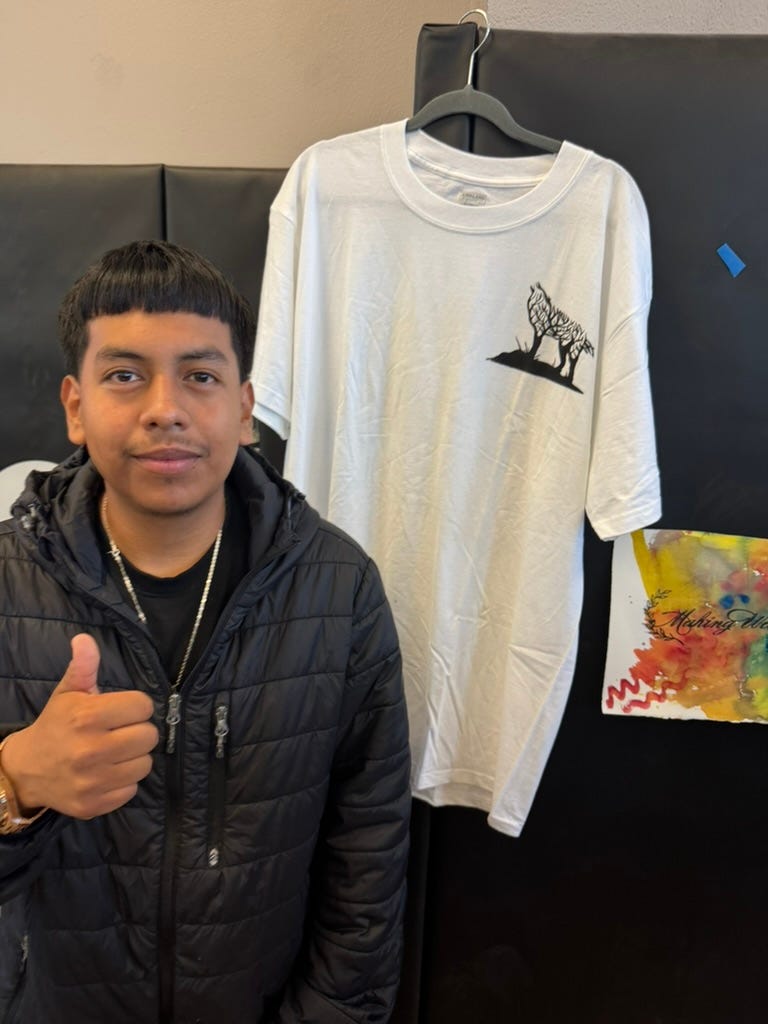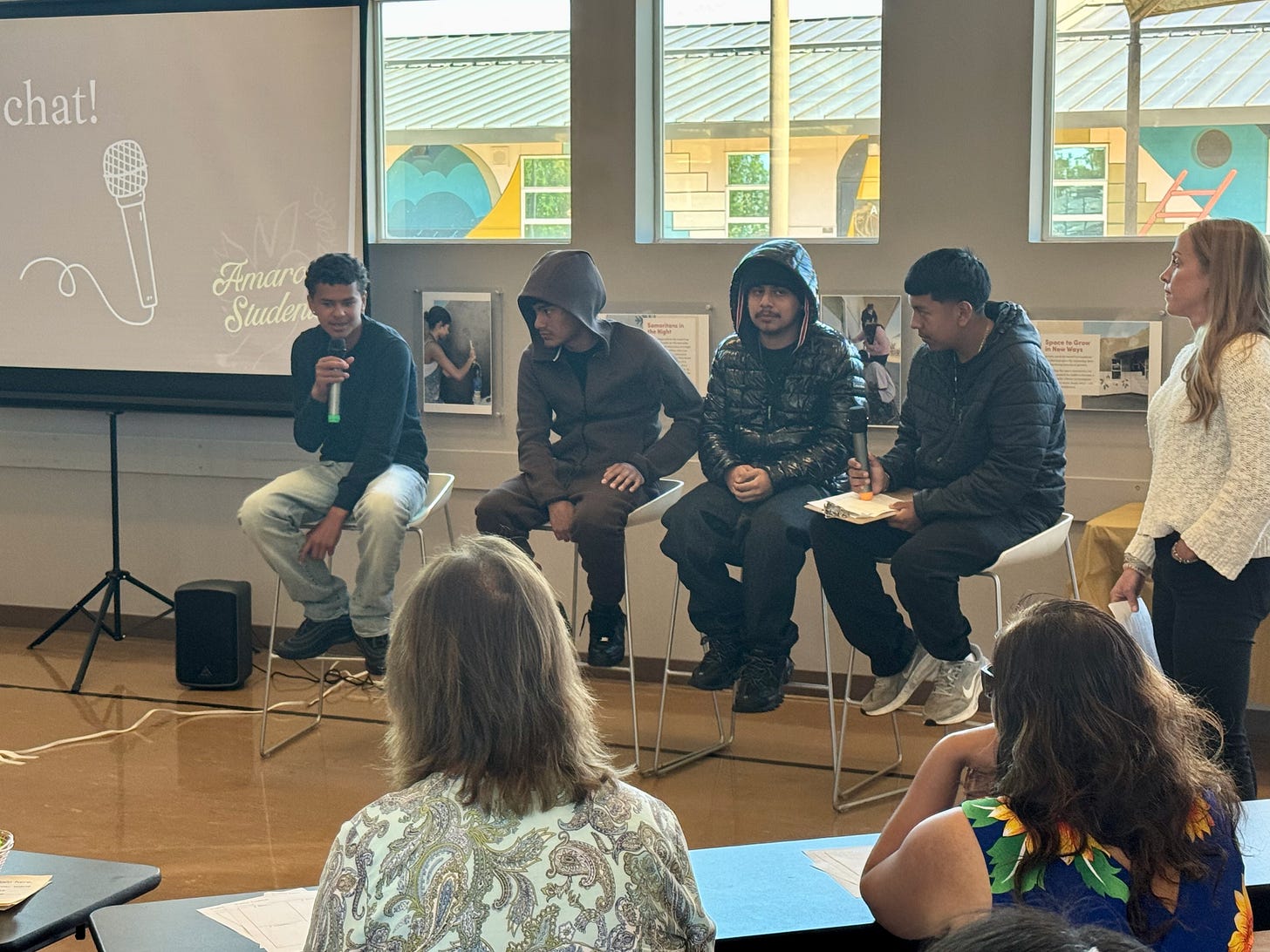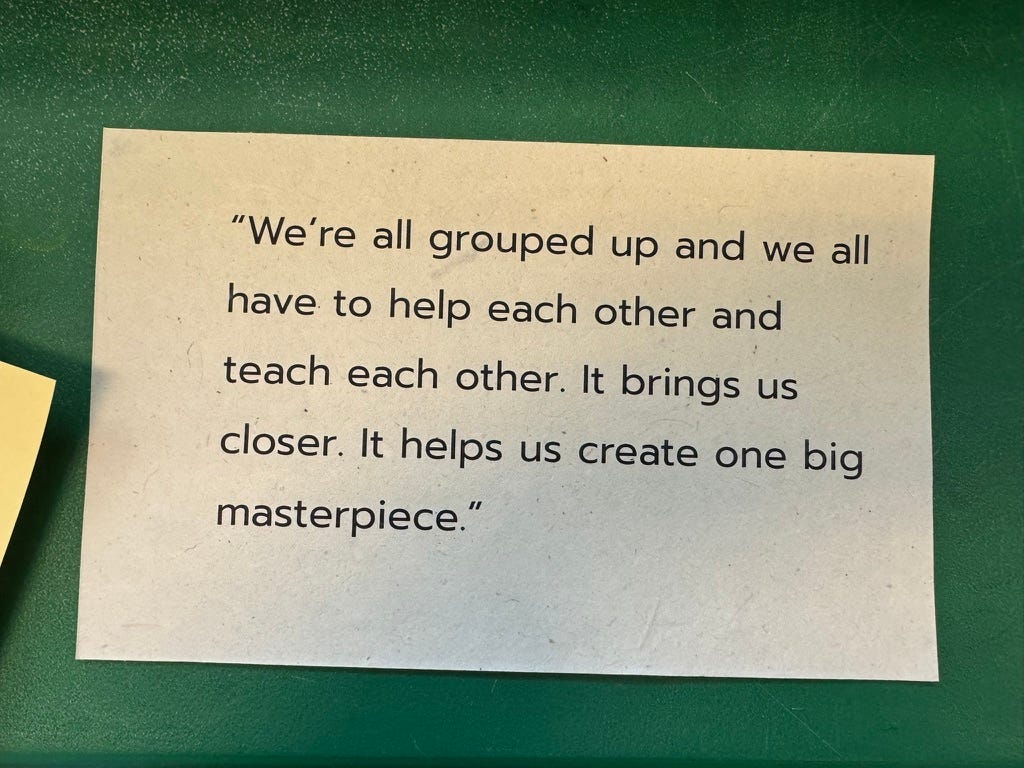“Making the world a better place” has become a kind of cliche, suffering from overuse particularly in Silicon Valley, such that it produces eye-rolls when said on stage at a tech event. However, its authentic meaning can be realized in the right circumstances, such as I saw in the exhibition of student work at The Making Wellness class at Amarosa Academy, an alternative education program in Santa Rosa, California. The phrase “You Make the World a Better Place” had been hand-stamped on canvas bags by several of the students. These are students in 7th-12th grade who were expelled from districts, are teen parents, and/or students that need an alternate setting. Some have been in and out of Juvenile Hall.
Eva Valfer of Stitch Kitchen Studio was a teaching consultant for the Making Wellness Class. While the class had a Cricut and a Glowforge laser cutter, Valfer wanted the students to focus on more hands-on, tactile work. “I want them to learn to trust themselves through unknown or uncomfortable processes,” she said. Some of the students are “sensory adverse” and so she introduced them to projects using fabric. She said that “repetitive motion is very good for experiencing a flow state.” The students used stamps whose designs had been cut out on the laser cutter and applied them to fabric. Doing hand-work was really important and choosing articles of clothing and accessories gave students something tangible that they could use — and show proudly to others.
One of the students, Alex, came up with an original design that he printed on a T-shirt. He said Eva Valfer had helped him come up with the design. “I asked him what he liked and he talked about nature and said he identified with the coyote brush,” said Valfer. She helped him create a distinctive design, part bush, part coyote.
Juliana Flynn who was described as “the engine of this program” by Casey Shea. Both work at the Sonoma County Office of Education. Casey Shea, who started the Make Projects program at a local high school, introduced the idea of connecting mental health awareness and making, after meetingAmy Zell at a conference in Pittsburgh in 2018. She heard Casey talk about “maker empowerment” and set off on her own maker journey. I interviewed Amy in 2020 on Make:cast - “The Wherewithal to Change Things through Making.”
She understood “maker empowerment” to mean the wherewithal to change things through making, and she applied it to her own life to move forward after suffering the loss of her son. Now she works with others who have experienced loss and trauma and she is weaving making into mental health practices.
Amy’s story is incredible but it’s great to see how it inspired the organizers of the Making Wellness program. Designed by a cross-functional team including Flynn, Shea and Bandar AL-Omaira, they set out to meet the needs of Alternative Ed students by blending Mental Health, Maker, and Work-Based Learning. “We wanted to increase students' knowledge of mental health issues and access to support, their ability to solve problems of interest in their community, and promote feelings of readiness for the future,” Flynn explained in an email.
“Each 1.75 hour Making Wellness session follows this general structure: review community agreements, build connection, learn about mental health topics, participate in discussion and reflection, and engage in maker activities geared towards reducing stigma and/or promoting wellness in one's community.
Flynn said that they “leaned in to students’ interests.”
Some days, students wanted to dive deep into topics like depression and identity. Other days were "maker heavy" as students bolted into the classroom asking, "What are we gonna make today?" Both the teaching team and students held one another accountable by recalling our goal of reducing stigma and/or promoting wellness in our community as students powered their way through maker projects.
We encouraged student experts to teach one another since our community agreements included, "students become teachers" and "noisy classrooms can be learning classrooms."
The Making Wellness class is a 12-week elective offered to students. “We typically have about 6-8 students in each elective class, and often have students request to take the Making Wellness course a second time,” said Flynn. “We had a total of 21 students enroll in the course during the 24-25 school year.” Attendance fluctuates as students might return to a district school or end up in Juvenile Hall.
“One of our previous Making Wellness students, currently in Juvenile Hall, inquired about the course and asked if he could still participate. I was able to connect with this student to review concepts from the mental health curriculum and explain the process for sharing during the public exhibition of learning. Our team is in the very beginning stages of figuring out a way to integrate Making Wellness in a more formal manner at Juvenile Hall.”
For the exhibition, some of the comments from students were printed out on cards. These testimonials of sorts were pretty amazing to read.
The Making Wellness class has been funded by Kaiser Permanente for the past two years “with the goal of increasing protective factors for youth situated farthest from opportunity,” said Flynn.
“We want the students to bring wellness into being by forming and shaping materials,” Flynn said at the exhibition. “Students are sharing what they made, showing their pride of accomplishment,” said Casey Shea, explaining that this was “maker empowerment.”
One student said: “I have a lot of issues with anxiety. I learned to exercise and get outdoors and I got better.” Another student said that he thought “making was the mental health part.”
Flynn that she and others interviewed the students regularly about their progress.
Students also took a daily survey and participated in empathy interviews that provided the teaching team with invaluable student insight used to guide plans moving forward. During these empathy interviews, many students shared sentiments about how working with their hands and engaging in maker activities helped them cope with anxiety, expanded their creativity, empowered them to take risks, and provided a spark of energy and freedom.”
Making the world a better place, indeed.









